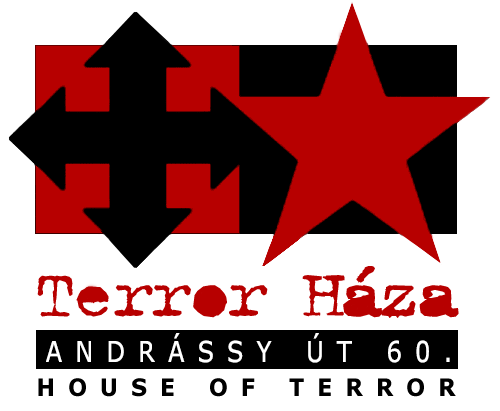
The flag has been handed over to our colleague by Kozányiné Anna Katalin Nagy in her home in Kecskemét, who cherished this flag and its history. As Kozányiné explained, the Hungarian tricolor is the heritage of her late husband, who died in 2007: “we met each other first in 1996, since then I have known about the flag. We talked a lot about it and we took it to commemorations of the Revolution.”
István Kozányi received the flag on October 25 1956: “My husband was on a mission in Badacsony until 22nd October, he returned home on 25th. He met his brother at home and from then on they went everywhere. Beside other places, they went to the University of Technology where he got the flag. He also got a pocket knife, which he used to cut the Communist coat of arms out of the flag. It is still unknown who had given him the flag. Nobody knew the other but according to my husband it felt like as if they had all been brothers and sisters to each other.”
Kozányi István walked the streets with his brother, taking the flag with them and they took part in the revolutionary movements. “When the blood donation in the hospital in Péterfy Sándor street was announced, they took the flag home and from then on István’s mother was hiding it. My husband and his elder brother went to give blood, and they got stuck there; they were asked to help with the transportation of the wounded. My husband’s brother became the “doctor” and István his “nurse”. They took a lot of wounded to the hospital. My husband got a gun by the way, but he gave it back after three days. As he told me, they went to Móricz Zsigmond square but there were so few people there that he did not see the point in keeping it with him any longer. Anyway, he said: “I would never even be able to shoot a rabbit, how could I shoot a man?”
As Kozányiné revealed, her husband had been driven by his youthful curiosity. “However, the most important thing for him was to overthrow the communist regime. He often remarked how amazing those few days had been and that it was impossible to be left out of it. While he was still around we used to go to commemorations together and take the flag with us of course.
After the revolution had been crushed István Kozányi was arrested: “He was captured on December 6th. Previously their house had been searched and some leaflets had been found, which had been typed by his mother in two copies. This act was regarded as conspiracy against the state by the authorities. He was released after two and a half months with a six-month suspended sentence. He turned in upon himself very much in prison; he believed he was not going to get out alive. There were a lot of people in the cell but he did not talk to them. He practically did nothing but draw and write poems, especially patriotic poems. He said he never regretted what he had done.
As Kozányiné added, even after his release her husband still suffered from the time he had spent in prison. “He could not leave his job as nobody would have hired him. He was thinking of visiting his cousin in the USA but he was not allowed to go. By the time we got together he dared to speak about his involvement in the revolution but previously he had kept quiet about it for a long time. His elder brother settled down in Austria, and he never returned from there.”
The flag remained at István Kozányi’s mother and when he left home to live independently, he took this precious item with him. “We got married in 1996 and the flag was taken with us to Kecskemét as well. My husband died in 2007, so I decided that I would donate it to the House of Terror Museum. I am not going to live forever either, so I want to ensure the flag to be at a safe place and that future generations may see it and get to know its history – Kozányiné added. “And by the fact that the flag will be kept in the House of Terror Museum in my own way I contributed to the worthy commemoration of the revolution, this miracle on earth.
On the occasion of the Memorial Year of the 1956 Revolution the museum welcomes donations which are related to the revolution in some way and is pleased to hear from individuals who would share their personal experiences, recollections and as a result enrich our collective national memory.


